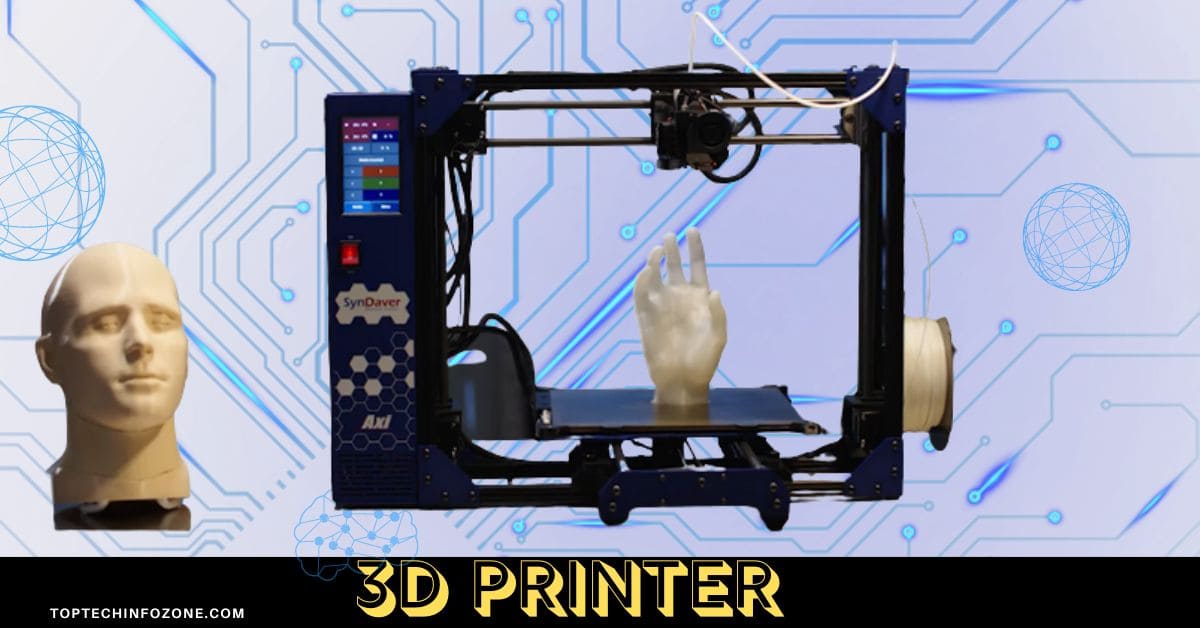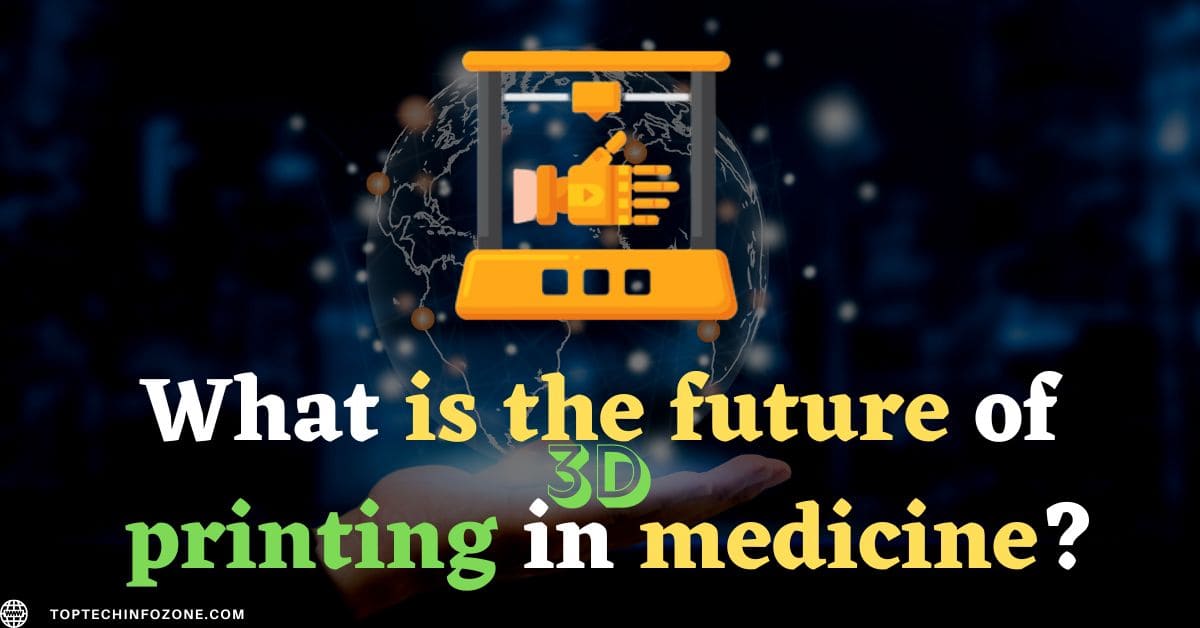Are you curious about “What is the future of 3D printing in medicine?”.
Great, we have all your questions answered on “What is the future of 3D printing in medicine?”.
3D printing technology is the next-generation revolution for many industries, including healthcare. But what does the future hold for 3D printing in medicine?
In this blog, we will explore the potential future applications of 3D printing in medicine. We have done extensive research on the potential applications of 3D printing in medicine. Our research has included exploring healthcare journals and consulting with our healthcare clients. There’s more to discover as you continue reading through the article.
What is 3D printing technology?
3D printing technology is a process of creating a physical object from the digital file of the same object. In this process, various layers accumulate to create the physical object. With this process, we can create various shapes and designs that are complex in nature.
There are several different types of 3D printing technologies :
- Fused Filament Fabrication (FFF)
- Stereolithography (SLA)
- Selective Laser Sintering (SLS)
- Digital Light Processing (DLP)
- Electron Beam Melting (EBM)
- Metal Binder Jetting (MBJ)
Which 3D printing technology is used for medicines?
3D printing technology is a process of creating a physical object from the digital file of the same object. In this process, various layers accumulate to create the physical object. With this process, we can create various shapes and designs that are complex in nature. The 3D printer uses a software developed by programmer to bridge the hardware with the application.
Mostly used Filament Fabrication (FFF) technology plays an important role in medicines. The main advantage is we can create custom pills with different combinations.
Stereolithography (SLA) technology produces high-resolution drug structures.
Metal Binder Jetting (MBJ) helps with production of drug delivery devices, such as inhalers or injectors.
How are 3D printers used in medicine?
- Production of medical implants and prosthetics: 3D printing technology can create personalized medical implants, such as hearing aids, dental implants, and bone replacements, that helps to tailor to the specific needs and anatomy of the patient.
- Surgical planning and education: 3D printing can create realistic models of patient anatomy, which helps to plan complex surgeries and train medical students and residents.
- Production of personalized medications: 3D printing technology can create custom-made pills or capsules with different doses or combinations of medications, allowing for the production of personalized and precise dosages of medication.
- Drug delivery devices: Researchers are exploring the use of 3D printing technology to produce complex drug delivery devices, such as inhalers or injectors, that can release medications in a controlled manner.
- Tissue engineering: Scientists are using 3D printing technology to create scaffolds for tissue engineering, which helps to repair or replace damaged or diseased tissues in the body.
- Production of medical equipment: 3D printing technology helps to produce a wide range of medical equipment, including surgical instruments, medical devices, and diagnostic tools.
Is 3D printing useful in the medical field?
3D printing technology helps in creating prosthetics, surgical guides, and organs by reducing the cost.
One of the main benefits of 3D printing in the medical field is its ability to create customized prosthetics. This solves the great problem of customizing prosthetics based on the measurements of the individual. 3D Printing the prosthetics help to create exact measurements of the patient and comfortable ones.
3D printing helps to create surgical guides. These surgical guides will help the surgeons to execute the procedure with precision. Based on the CT scans and MRI the patient’s anatomy is 3D printed. They analyse the 3D models and figure out the challenges that may arise at the time of surgery. The advantage is more surgeries will be successful.
3D printing has the potential to create organs which is in the early development stage. By printing a patient’s own cell it may be possible to create organs someday so that donors are not required.
Of course, medical professionals will take some time to be proficient and there is a learning curve also involved.
While there are certain limitations to consider, the potential benefits of 3D printing in the medical field make it a technology worth investing in and exploring further. 3D printing is a powerful tool that can revolutionize the healthcare industry, helping to reduce costs and improve patient outcomes.

What medical devices can be 3D-printed?
The medical devices that can be 3D-printed are :
| 3D Printed | Advantages |
|---|---|
| Prosthetics | Design flexibility and exact measurements. |
| Surgical guides | Model from CT and MRI scans for analysis. |
| Dental implants and crowns | Creation of customized implant abutments specific to measurements of the patient’s mouth. |
| Orthopaedic implants | Implants tailored to the specific measurements of the patient such as knee or hip replacements. |
| Hearing aids | Custom-fit hearing aids. |
| Medical models | Create models of a patient’s anatomy, such as the heart, brain. |
| Drug delivery devices | Customized drug delivery devices, such as inhalers. |
| Tissues and organs | Potential to create functional tissues and organs for transplantation. |
Is 3D printing useful in the medical field?
Yes, 3D printing is useful in the medical field and the benefits of 3D printing in the medical field include:
- Customization: 3D printing allows custom and tailored fit devices which turns out to be comfortable and functional.
- Improved patient outcomes: The use of 3D printing helps surgeons plan surgeries leading to more successful surgeries.
- Reduced healthcare costs: 3D printing reduces healthcare costs.
- Addressing shortages: In the future, 3D printing can address shortages of medical devices and organs for transplantation.
Conclusion of what is the future of 3D printing in medicine :
3D printing will revolutionize the field of medicine in the coming years. The customization of medical devices will help patients to use them with ease and comfort. and implants, as well as providing a platform for drug discovery and personalized medicine. In the upcoming days, 3D printing will play an important role in the production of a wide range of medical products. Products like prosthetics, surgical instruments, and implantable devices such as hearing aids and stents have an edge.
With the availability of 3D printers, the cost will come down and devices will be affordable. Planning surgeries will be easy and the success ratio will also increase.
This technology will bring significant advances in the upcoming years.
Frequently Asked Questions (FAQs):
Chuck Hull invented 3D printing in 1980.
Yes, 3D printing used to create customized combinations in precise amount.
Yes, 3D printers are affordable based on the size and features.
The cost of medical 3D printing vary widely depending on the equipment and materials required.
Simple models or prototypes are relatively inexpensive, while printing complex living tissue or organ structures, can be quite expensive.
Related Posts:
- LiDAR Drones: Revolutionizing Remote Sensing and Data Collection (2023)
- The Revolutionary Selfly Drone: Changing the Game of Personal Photography (2023)
- Mastering Different Flight Modes for Drones: A Comprehensive Guide (2023)
- Revolutionizing Innovation: Self-Flying Drones Take Technology to New Heights (2023)




